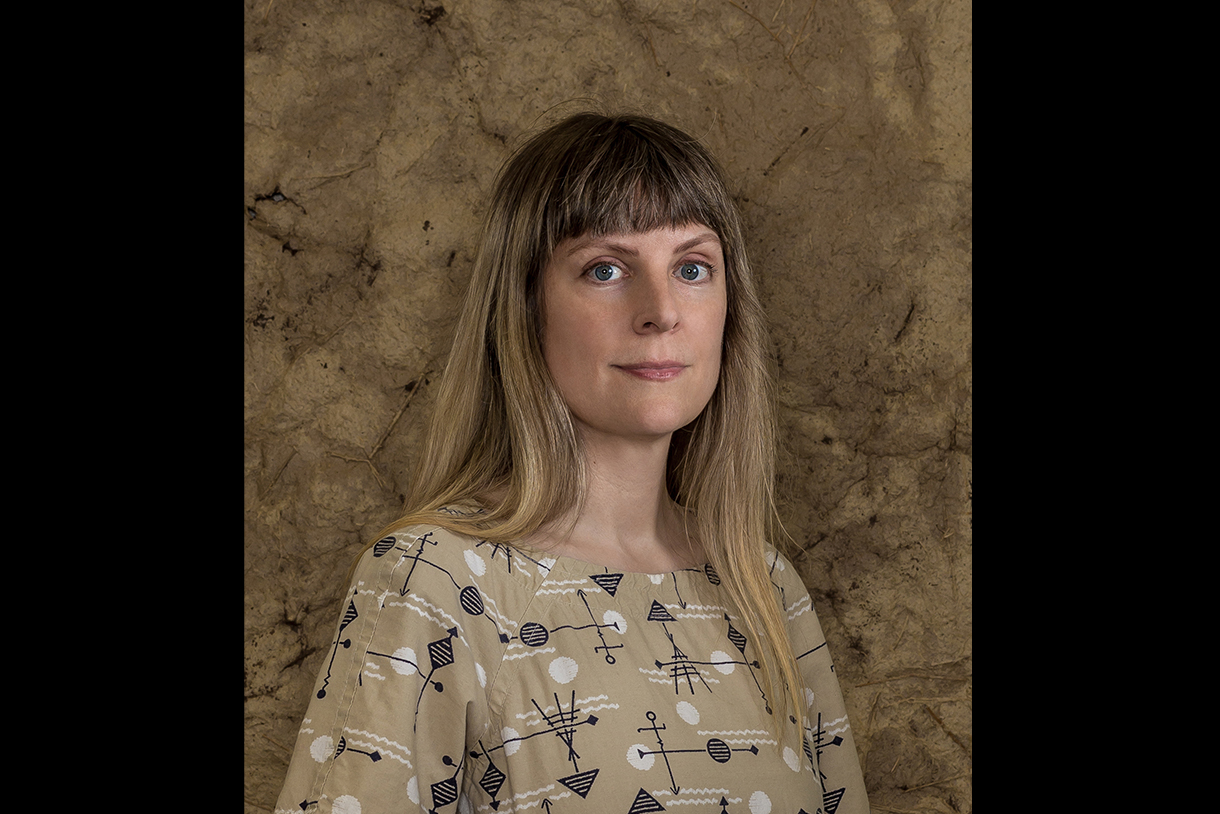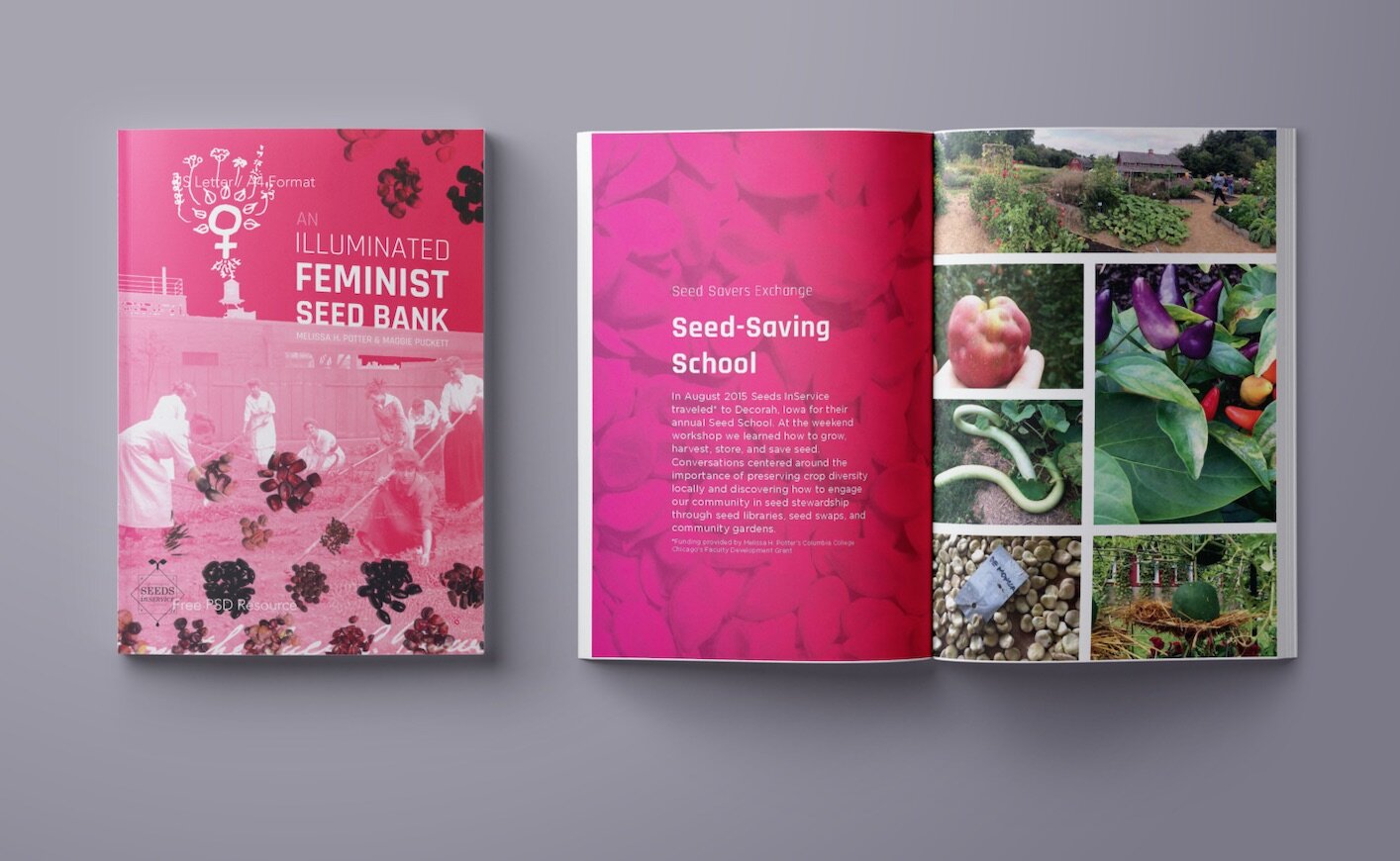Art and Art History Faculty Member on Art, Papermaking, and the Unique Columbia Experience
One of Melissa Potter’s first art memories is of helping her mother cut fabric for a sewing project. The experience made such an impression on Potter, that she became fascinated with textiles. Her parents encouraged that fascination and curiosity by enrolling her in art classes as soon as she could hold a pencil.
Decades later, Potter is an artist in every sense of the word. She’s made a career of printmaking, painting, and papermaking, and as a Professor in Columbia’s Art and Art History Department, she’s helping others do the same.
“A wonderful print colleague while I was working in New York, Martin Mazzora, wrote me one day and said, ‘didn’t you tell me you’re a papermaker? Here is a listing for a full-time papermaking teaching job.’ It was so unusual, I had to apply. I was so lucky to be hired,” says Potter looking back at landing a job at Columbia.
Potter’s background in art and history have been a great asset to the school. “I studied painting and printmaking and became intrigued with hand papermaking after a sculpture professor recommended it as a material,” she says. “I work to make this medium a unique part of the Columbia College Chicago experience for students in any department. I also bring my history in activism and feminism into my classes and focus on Chicago’s profound contributions to art activism and social engagement.”
Potter can be found working on several projects at any given time, which she considers a luxury. “This year, I have two gardens and research projects, several exhibitions, and invitational visiting artist lectures. I work to bring these experiences back into the classroom, and support students in finding creative ways to balance their practice with employment.”
Some of the projects she is most proud of include co-authoring a book with Maggie Puckett, an alum of the MFA in Book and Paper Arts program at Columbia. An Illuminated Feminist Seedbank was published in 2018 and is part of the Global Seed Vault collection in Svalbard, Norway. In addition, Potter mentions a multi-year papermaking collaboration with Sheroanawë Hahihiiwë, a Venezuelan Yanomami community member. “Shero made editions of handmade paper with my graduate students, graduate faculty, Laura Anderson Barbata, and myself,” says Potter. “It was the second time in US history a Yanomami community member came to the United States. These works are in the collection of the Columbia College Chicago Archives. Shero is now an internationally renowned artist.”
Although Potter may make artmaking look easy, she knows that multimedia art doesn’t come without challenges, and she does her part to support students who may be facing them. “I think the constantly shifting technologies are a big challenge, and the interfaces take a lot of time to learn, update, and master. I offer my making spaces as an alternative space, while at the same time supporting the interdisciplinary and multi-media approaches to material,” she says. “I am putting a greater emphasis on waste and reuse in light of climate crisis. This also helps students imagine creative reuse in their own spaces with everyday materials.”
When asked what advice she would give to Columbia students pursuing art as a career she says, “Stick with what makes your work stand out. Hand papermaking was a liability for a large part of my career, now it is accepted as a timely engagement with climate crisis, agriculture, and land use, among other issues. I help students understand what makes a Columbia education singular—from our incredible fabrication studios to the Center for Black Music Research, our phenomenal archives, and a leading commitment to DEI, I remind students to always make that known when competing for jobs and opportunities.”
MEDIA INQUIRIES
Daisy Franco
Communications Manager
dfranco@colum.edu
Recent News
- Columbia Holds Sixth Annual Hip-Hop Festival
- 5 Questions with Columbia Alum and Trustee Staci R. Collins Jackson
- Anchor and Reporter Paige Barnes ’21 Found Stories Worth Telling at Columbia
- Make Columbia Part of Your Holiday Season: Watch Alum Movies and Shows
- Fashion Design Alum Shaquita Reed ’18 Expresses Herself Using Different Mediums

